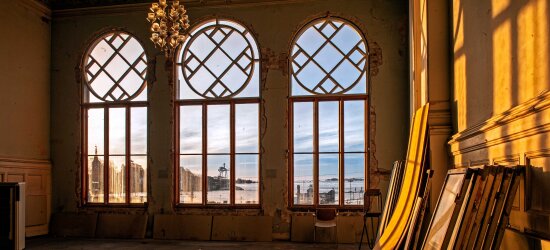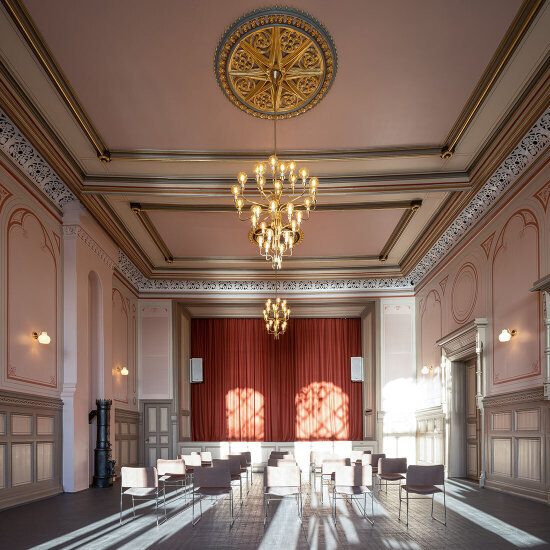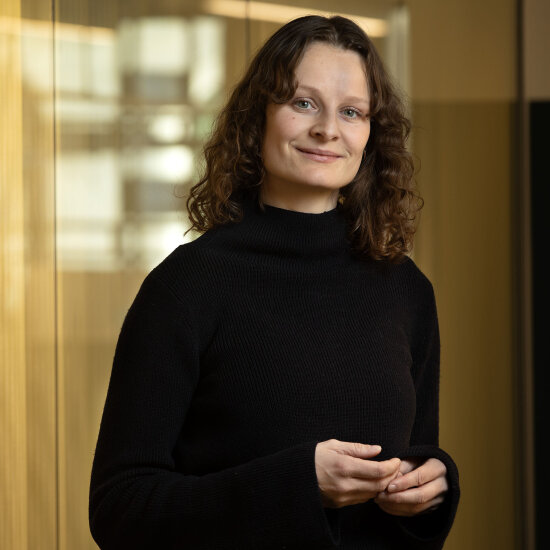
Larvik's cultural treasure, Festiviteten, has been restored to its former glory. Here we see the banquet hall during the restoration.
The oldest part of Festiviteten was built as a private residence in 1793. Since its conversion to a place of assembly in 1874, the Festiviteten has played many parts in Larvik’s history. The building has served as a town hall and courtroom, a theatre and function rooms. Due to a lack of maintenance the building gradually fell into critical disrepair and was abandoned.
The property developers Alfa Eiendom joined forces with MAD Architects and founded Gjenbrukshuset Festiviteten AS, which bought the property from the Larvik municipal authorities for NOK 1. The objective was to preserve the building and bring it back to its former glory.
One of the country’s oldest theatres
Much of the building had to be demolished and rebuilt, but whatever could be saved was preserved, repaired and brought back to life. MAD Architects and Sane interior designers worked in partnership to bring out historic qualities and facilitate new functions.
Photo: Terje Svendsen
The building’s character and history guided the choice of details, materials and colours, and influenced the design of new sections of the building. Leading local and national experts were enthused. The ballroom – one of Norway’s oldest theatres – has regained its sumptuous decoration after painstaking work by master painters and experts in colour and building archaeology.

Photo: Kyrre Sundal
Locals contributed with materials for reuse, old furniture and photographs of Festiviteten – and, not least, important knowledge. The result is a magnificent building that provides not only cultural venues and places to eat, but jobs as well.
Photo: Terje Svendsen
The pride of the community
The local community feels proud of Festiviteten, which has been warmly welcomed by the people of Larvik. The wide variety of activities on offer revitalises the area.
As a reuse project, Festiviteten represents an excellent climate initiative. Preserving old buildings, rather than building from scratch, is often highlighted as one of the most important things we can do to reduce climate gas emissions.
The restoration of Festiviteten has also given a boost to local crafts and trades, and increased knowledge of traditional building techniques.
Festiviteten in Larvik: Restoration of an historic building in the centre of Larvik
By: Gjenbrukshuset Festiviteten, MAD Architects, Sane interior designers
Design disciplines: Architecture, Interior design, Heritage and conservation
Recipient of the DOGA Award
This project har received the DOGA Award for Design and Architecture for its outstanding qualities, and for showing how strategic use of design and architecture create important social, environmental and economic value.
These are two reasons why this is an exemplary project:
- Reuse and repair rather than building from scratch
The reuse of buildings makes for good circular economy performance because materials and products with a high return value remain in the economic cycle. - Preservation of historic buildings and diversification
The reuse of old buildings for the purpose of revitalisation and diversification is combined with strengthening the shared identity of local residents across generations.

